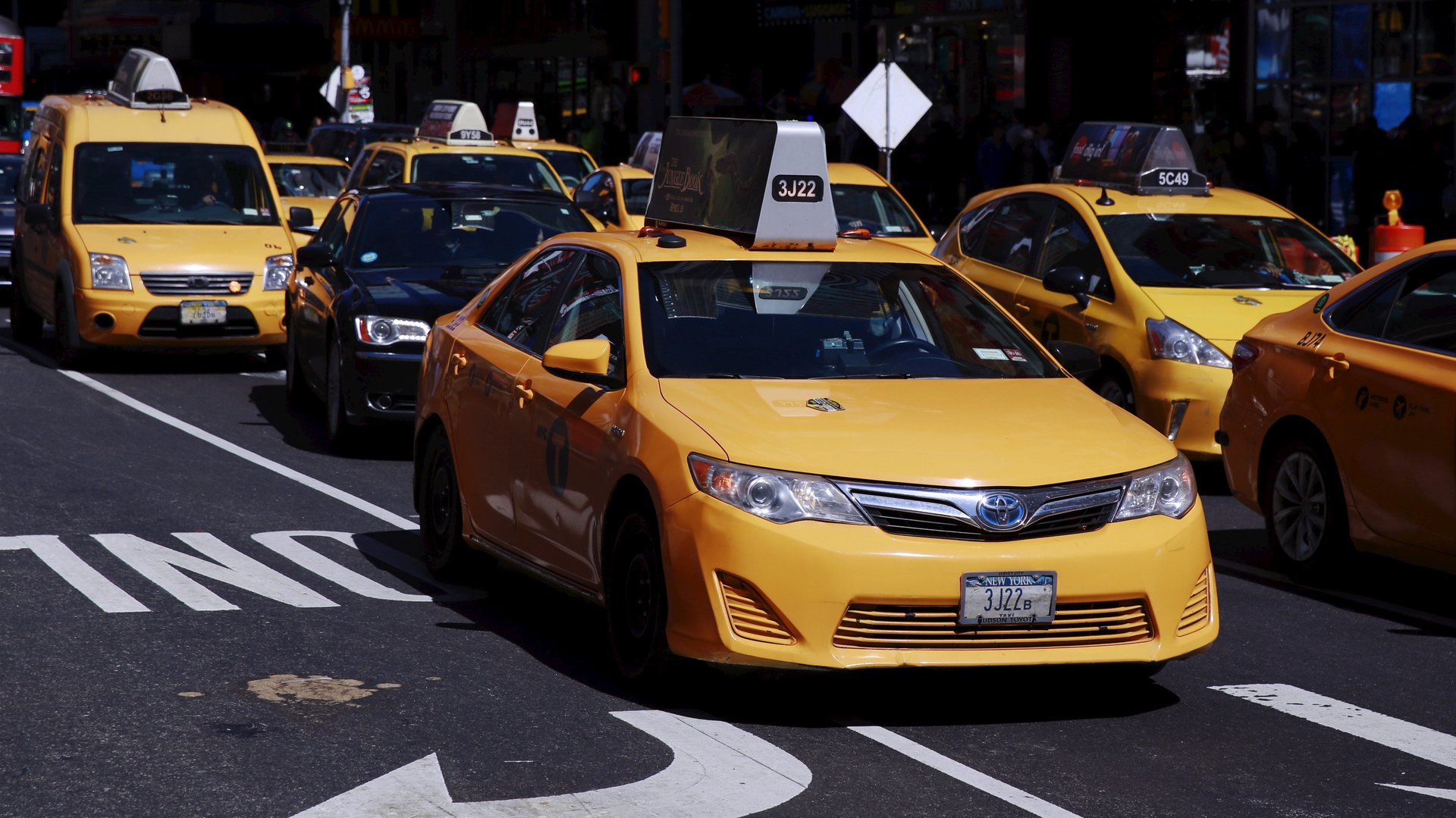Can shared rides save the iconic New York City yellow cab?
Uber’s rise in New York City has been the yellow cab’s downfall. But could an Uber-like feature save it?


Uber’s rise in New York City has been the yellow cab’s downfall. But could an Uber-like feature save it?
In the six years since Uber arrived in the city, summoning a car through an app has become ubiquitous—even more so than hailing a taxi from the curb. Taxis are a tightly regulated industry and their numbers have held constant at 13,587 over the last three years even as the number of cars affiliated with a ride-hailing company has ballooned. In January 2016, there were 28,781 vehicles tied to ride-hailing companies, according to data from the local taxi regulator. This January, there were nearly 50,000, bigger than even the traditional black car industry.
In the meantime, the value of a taxi medallion, once a small fortune or at least the key to a comfortable retirement, has fallen precipitously. In April, a single medallion sold for $241,000; in 2013, some fetched more than $1 million.
So it’s ironic that the yellow cab industry is now looking to a feature most often associated with Uber for its salvation: shared rides.
Via, a shared rides service that operates in New York and two other US cities, said today that it is partnering with taxi-tech provider Verifone to help customers share their cab rides. The goal is to help taxis compete better against the convenience and cheap prices offered by well-funded startups like Uber and Lyft.
Riders will be able to book a shared taxi through either Via or Curb, the app owned by Verifone that currently facilitates e-hails for New York taxis. For passengers, the incentive to do this is price: They’ll pay 60% of the fare anytime they’re sharing with another passenger, and the normal metered rate whenever else. In other words, if I booked a shared taxi and the driver picked me up first, I’d pay the full rate until we collected the second passenger, 60% of the fare while we overlapped, and then the full fare again after the other rider got out. Drivers will get paid the metered rate for the entire trip, and the extra (from when both passengers are paying 60% of the fare) will be split between Via and Curb. Via declined to comment on the specifics of the revenue-sharing agreement.
New York has tried to make carpooling work for yellow taxis in the past, without much success. In 1986, the TLC tried to formalize taxi stands for people on the Upper East Side, where it was famously difficult to get a cab. It never really caught on, but that didn’t stop the TLC from trying again in 2010, when then-commissioner David Yassky set up a “new yellow taxi group ride stand” at East 79th Street and York Avenue.
Private companies on the other hand have made carpooling common. UberPool and Lyft Line are both popular transportation options in New York, with prices that at times are nearly as cheap as taking the bus or subway. Via, which operates in limited parts of Manhattan and Brooklyn, has garnered a small but devoted following, with 800,000 users and 15 million rides completed since it launched in September 2013, according to spokeswoman Gabrielle McCaig. For now, shared cabs booked through Via will also only operate in Manhattan south of 100th Street, but McCaig said Via hopes to expand the service to the rest of Manhattan as well as the green cabs that service New York’s outer boroughs.
Where shared rides have yet to win support is with drivers. That’s in part because many professional drivers’ first exposure to shared rides has come from Uber or Lyft, which are constantly competing with each other to drop prices lower, meaning drivers need to work harder to earn the same amount of money as they did before. Despite that, McCaig thinks cabbies might embrace the new system.
“Yellow taxis are definitely looking for ways that they can stay competitive against the onslaught of e-hail,” she told Quartz. “From the conversations we’ve had with drivers they’re definitely pretty open to it.”